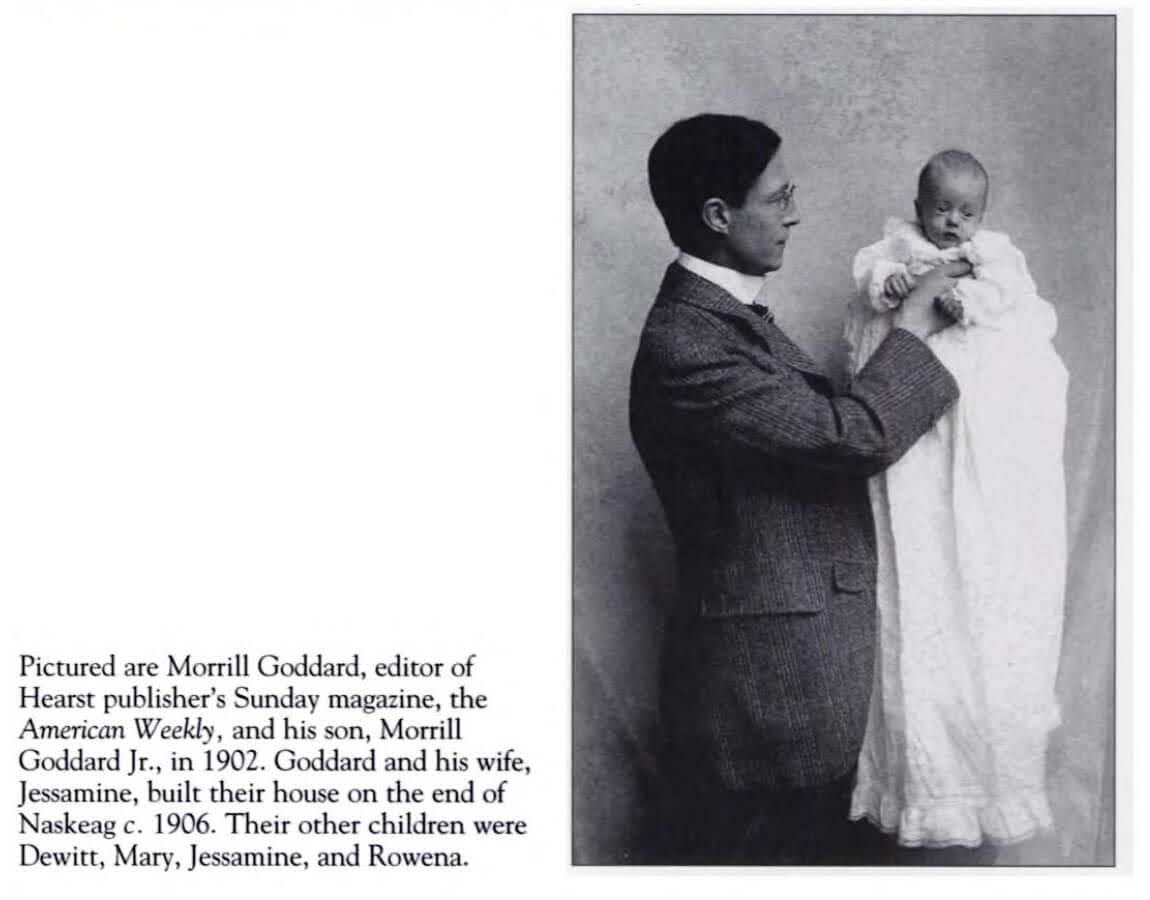Morrill Goddard: Godfather
 Goddard a segurar o seu baby: all-things-web, comunidade & algoritmos!, os peeps encontraram uma foto do homem
Goddard a segurar o seu baby: all-things-web, comunidade & algoritmos!, os peeps encontraram uma foto do homemAinda em luta com o back catalogue, mas novas entradas em cultura, comunicação, tecnologia, BD não podem ser recusadas. Voltamos sempre à génese dos comics nas guerras amarelas da imprensa norte-americana dos William Randolph Hearst e Joseph Pulitzer para exemplos descomplicados a complicar no presente. Hoje, da origem dos comics, o termo.
“Comics” are not necessarily comical, the obvious meaning of the word to the contrary notwithstanding. Whether in pulpy pamphlets or newspapers, comics are sometimes funny and sometimes quite serious. So why call them “comics”? The reasons for the anomaly are evident in the history of the medium, a history over which Goddard hovers consequentially albeit largely unacknowledged.
in "Morrill Goddard: Godfather Of The 'Comics'" 24 set 2020
Goddard (7 out 1865 / 1 jul 1937), cioso da sua privacidade (parece que chegava a obrigar à destruição das suas fotos), dizem-no renegado aos footnotes da história da imprensa norte-americana entre a ocasional menção em passagens nas "biographies of some of the press barons". Nesta peça do TCJ 24 set 2020 procuram recuperar a importância do seu contributo a todas-as-coisas-BD, especificamente na etimologia do termo entre o povo dividido de Trumpas e Bidas. Antes de passarmos ao passe-palavra, atendemos já ao nosso destaque: da importância da tech para determinar o meio, evidência que retrocede quando se torna tão omnipresente e banal e ganha novos sentidos — mas divagamos para outras alturas. O vosso mashup em 3 passos:
We call the artform “comics” rather than the less confusing “cartoon strips” or (for comic books) “paginated cartoon strips” because of Goddard’s inspired deployment of the World’s Sunday supplement as an imitation of weekly humor magazines.
1) When the World launched its imitation “comic weekly” as a supplement to its Sunday edition, it was lumped together in the popular mind as another of the “comics.” In short, “comics” denoted the vehicle not the artform.
2) And then, once the World had shown the way, papers in other cities began publishing humorous Sunday supplements full of funny drawings in color and risible essays and verse. In a relatively short time, obeying the dictates of demand, newspapers eliminated the essays and verse and concentrated on comical artwork, which was increasingly presented in the form of “strips” of pictures portraying hilarities in narrative sequence. It was but a short step to the use of comics to designate the artform (cartoons and comic strips) as distinct from the vehicle in which they appeared (the Sunday supplement itself). Once that bridge was crossed, meaning deteriorated pretty rapidly.
3) Storytelling (or “continuity”) strips arrived in the 1920s, and even when, in the 1930s, the stories they told were serious, they were called “comics” because they looked like the artform called comics and they appeared in newspapers with all the others of that ilk. Finally, when comic strips began to be reprinted in magazine form in the 1930s, the now-generic term was applied to those magazines, too; in the new format, comic books quickly emerged from comics.
in "Morrill Goddard: Godfather Of The 'Comics'" 24 set 2020
Ainda de tech, sequências e consequências, aquilo da cultura que se sobrepõe. Se à génese dos comics apontamos-lhe inovações tecnológicas que permitiram a reprodução em massa dos bonecos, parece que lhe devemos origem igualmente à cultura do clube do bolinha dos primórdios do século passado. Ainda hoje associados nas suas manifestações mais mainstream às hormonas pubescentes masculinas, talvez o padrinho tenha feito um desfavor a todos esses punheteiros quando ajudou a inventar todo um novo meio (*) Nota: conhecemos esta outra história para o mesmo episódio. ao insistir contra um catálogo de moda feminina:
The paper started a comics section in 1889, but it wasn’t until 1893 that a press was devised that could print color accurately. At first, the paper’s editors thought the color supplement should be devoted to women’s fashions, “but just about that time, Goddard, city editor of the World, was made Sunday editor.” And Goddard “was emphatically against the fashion supplement.”
in "Morrill Goddard: Godfather Of The 'Comics'" 24 set 2020
O resto é História.
Goddard’s plan for the World’s color Sunday supplement was to make it in the image of the weekly humor magazines of cartoons and humorous verse then enjoying enthusiastic readership in New York and around the country. In quest of work that would be original with the World, approached McCardell [do Puck] [que] directed Goddard to Richard F. Outcault. Outcault would do his first original work for the World with a comic strip published September 16, 1894. He would eventually produce a half-page comical drawing called “Hogan’s Alley” in which a bald-headed kid in a yellow nightshirt stood out among the other street urchins and, as “the Yellow Kid,” would demonstrate and establish the commercial value of comics to newspapers by boosting circulation, thus assuring the subsequent maturation of the comic strip form.
in "Morrill Goddard: Godfather Of The 'Comics'" 24 set 2020
E esses são outros quadradinhos.

